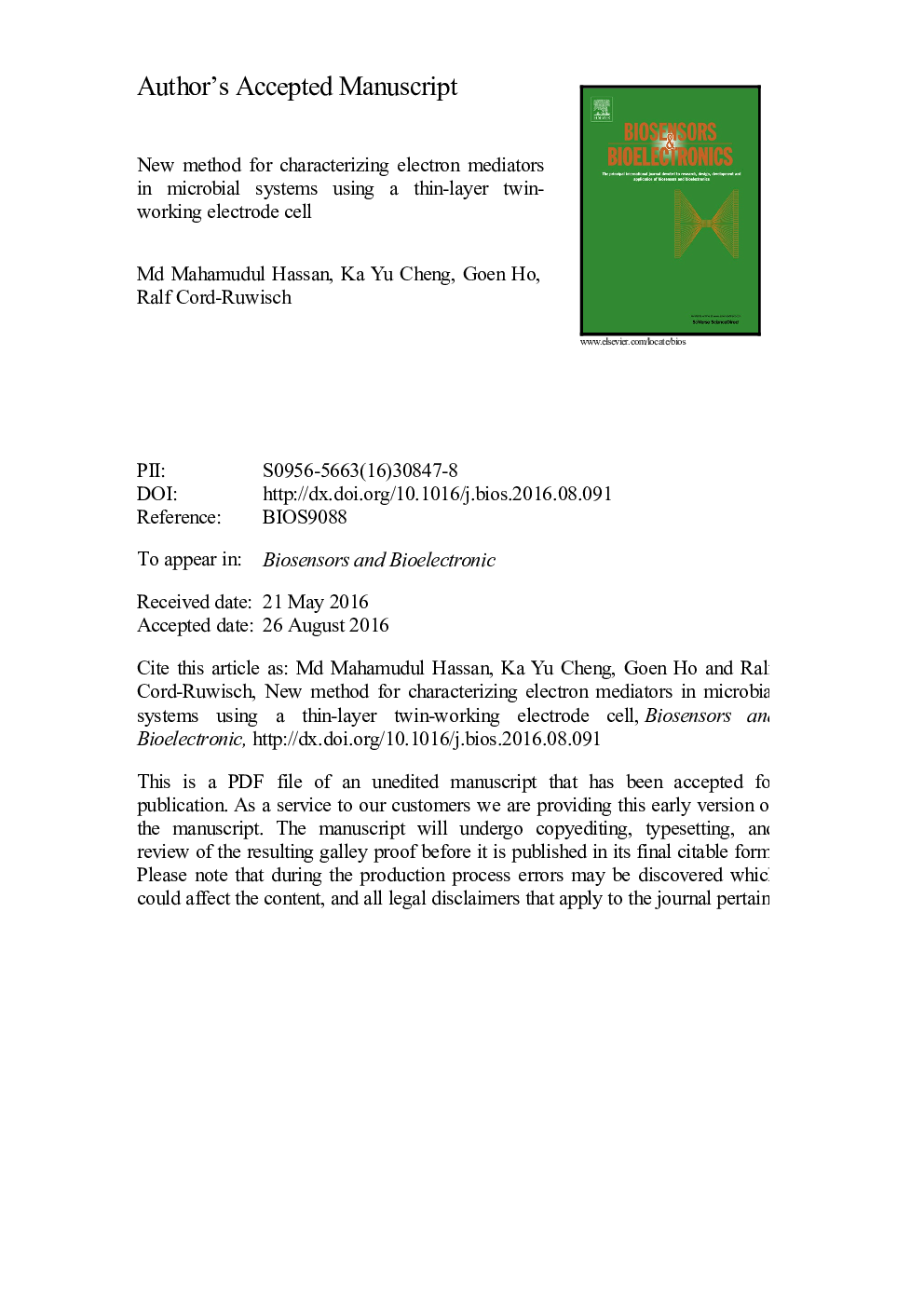| Article ID | Journal | Published Year | Pages | File Type |
|---|---|---|---|---|
| 7230223 | Biosensors and Bioelectronics | 2017 | 23 Pages |
Abstract
Microbial biofilms are significant ecosystems where the existence of redox gradients drive electron transfer often via soluble electron mediators. This study describes the use of two interfacing working electrodes (WEs) to simulate redox gradients within close proximity (250 µm) for the detection and quantification of electron mediators. By using a common counter and reference electrode, the potentials of the two WEs were independently controlled to maintain a suitable “voltage window”, which enabled simultaneous oxidation and reduction of electron mediators as evidenced by the concurrent anodic and cathodic currents, respectively. To validate the method, the electrochemical properties of different mediators (hexacyanoferrate, HCF, riboflavin, RF) were characterized by stepwise shifting the “voltage window” (ranging between 25 and 200 mV) within a range of potentials after steady equilibrium current of both WEs was established. The resulting differences in electrical currents between the two WEs were recorded across a defined potential spectrum (between â1 V and +0.5 V vs. Ag/AgCl). Results indicated that the technique enabled identification (by the distinct peak locations at the potential scale) and quantification (by the peak of current) of the mediators for individual species as well as in an aqueous mixture. It enabled a precise determination of mid-potentials of the externally added mediators (HCF, RF) and mediators produced by pyocyanin-producing Pseudomonas aeruginosa (WACC 91) culture. The twin working electrode described is particularly suitable for studying mediator-dependent microbial electron transfer processes or simulating redox gradients as they exist in microbial biofilms.
Related Topics
Physical Sciences and Engineering
Chemistry
Analytical Chemistry
Authors
Md Mahamudul Hassan, Ka Yu Cheng, Goen Ho, Ralf Cord-Ruwisch,
